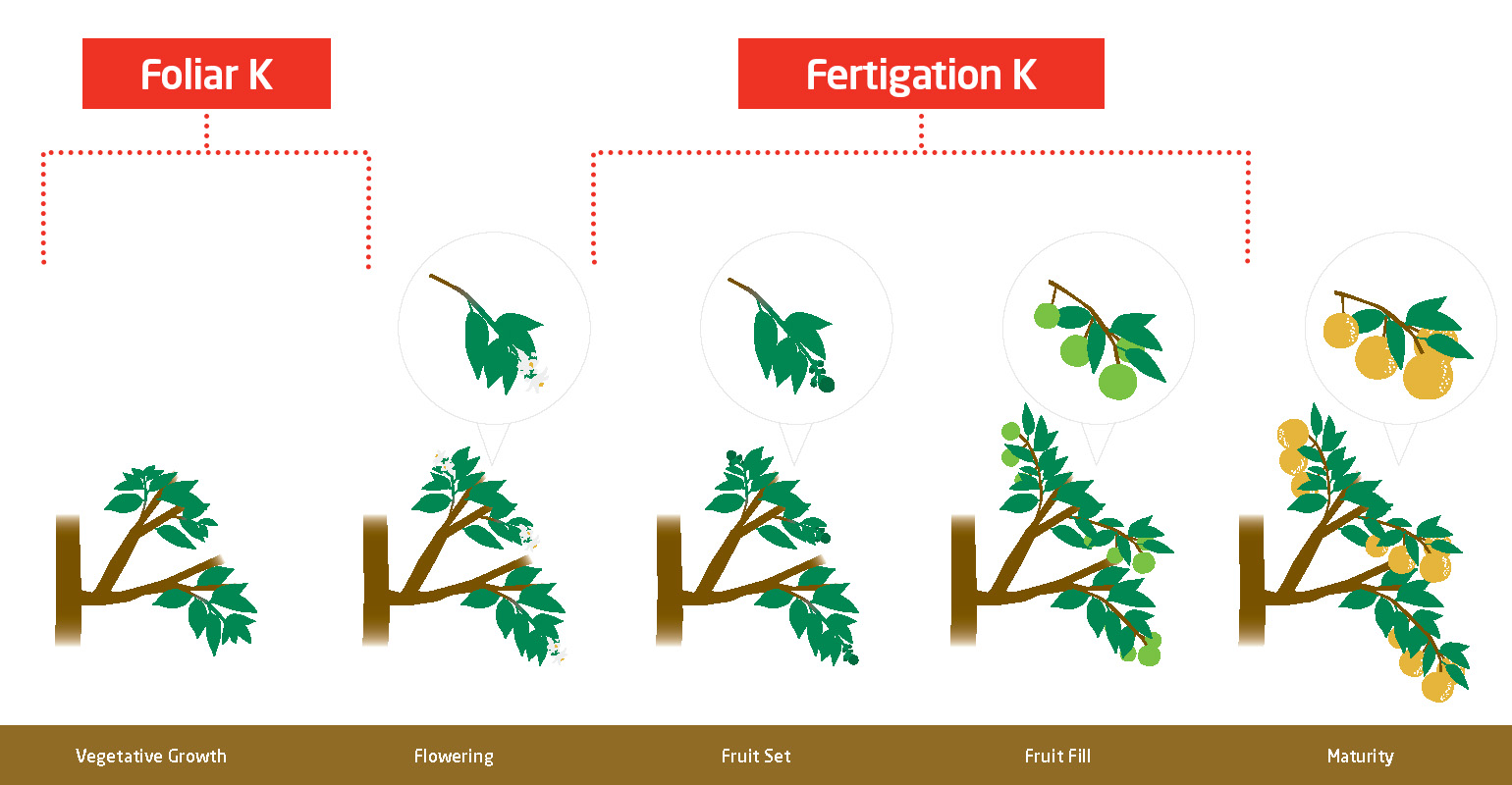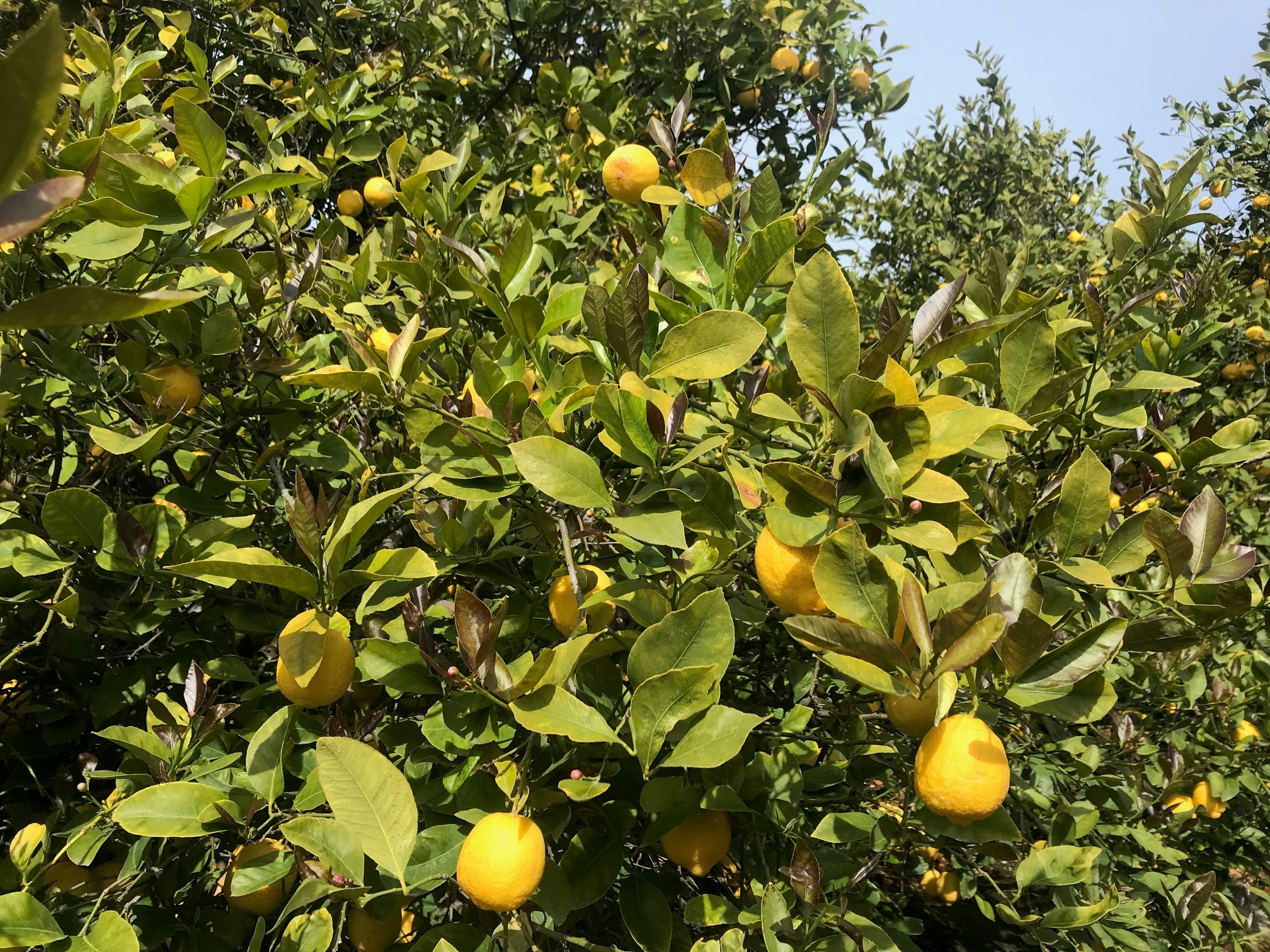Potassium Applications in Citrus
December 13, 2021
Agronomics
Potassium is one of the most significant mineral nutrients in citrus production to achieve good yields and maintain adequate quality. On average, approximately 2 lb of K2O are removed per 1,000 lb of oranges harvested, which is the highest of any mineral element, even nitrogen. In all plant species potassium is necessary for a variety of essential tasks including protein and starch synthesis, enzyme activation, and photosynthesis. Its role in regulating the opening and closing of stomata make potassium level an important factor in mitigating abiotic stresses. High K levels have also been shown to suppress disease development in many plant species.
High potassium levels in citrus fruit are usually correlated to increased fruit size, thicker rind, and increased acidity at harvest.
Conditions Leading to Potassium (K) Deficiencies
Potassium mobility in soils is intermediate between nitrogen and phosphorus but is not easily leached because it has a positive charge (K+), which causes it to be attracted to negatively charged soil colloids. However, many citrus orchards in Florida are on soils with very low CEC values. In these situations potassium leaching can occur.
Some soils with a high proportion of Vermiculite-type particles have very high potassium fixation making K availability very low in these soils. On the east side of the San Joaquin valley in California, many citrus orchards are planted on soils with high potassium fixation potential.
Potassium availability in the soil is generally very good at neutral and alkaline pH levels. However as the pH drops below 6, K availability significantly decreases.
Potassium deficiency in citrus causes a marginal chlorosis in mature leaves that can develop into necrosis along the leaf margin. Potassium deficient orchards have a greater prevalence of undersized fruit, and fruit disorders like splitting or creasing.
Desired Potassium Tissue Test Values
The optimum source of leaf tissues for nutrient analysis in a citrus tree is 4-6 month-old spring flush leaves from non-fruiting branches.The concentration of K in these leaves should be at least 0.70% to avoid deficiencies. Higher levels may be desirable to push better fruit quality and yield.
Key Application Timings and Rates
Most potassium uptake in citrus peaks in late spring and early summer when fruit set and early sizing take place. This is also the time when new feeder roots are emerging in the soil. Spoon feeding K fertilizers through fertigation during this time takes advantage of active root uptake. BRANDT EnzUp K is a low salt index, highly plant available formulation that is ideally suited for fertigation during this period. Frequent applications at lower rates are a great approach when either leaching due to low soil CEC, or fixation due to a high proportion of K-fixing clays, are a concern. Foliar sprays of potassium during active leaf flush can be a good way to augment soil applications. BRANDT Smart K B is a good formulation for the spring flush prior to bloom. In addition to potassium, the boron in this product can facilitate flower formation and fruit set. Manni-Plex K is another great source of foliar K that is safe and effective anytime during the season.
Key Products:
- BRANDT EnzUp K DS
- Manni-Plex K
- BRANDT Smart K B


K deficiency in lemons.
